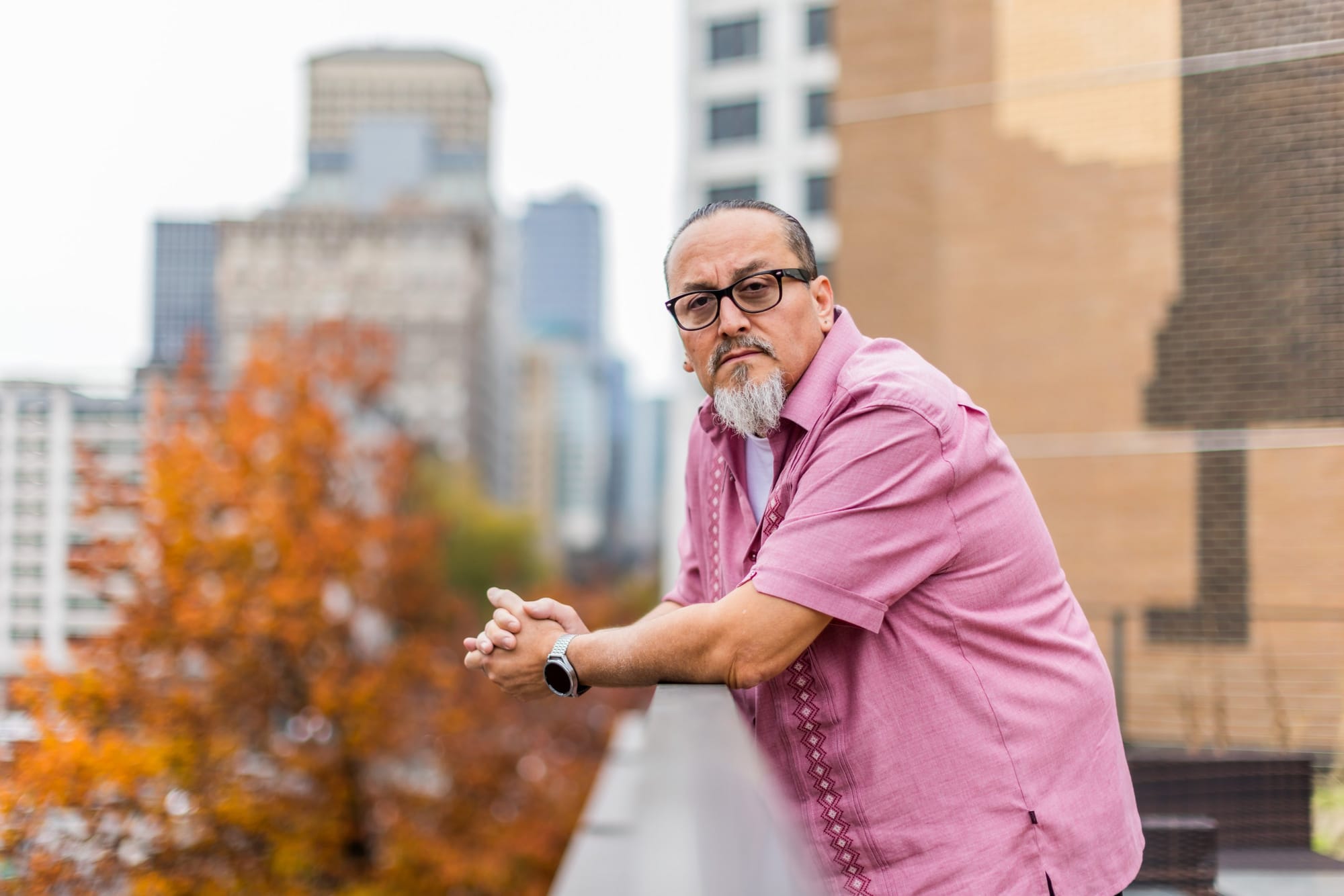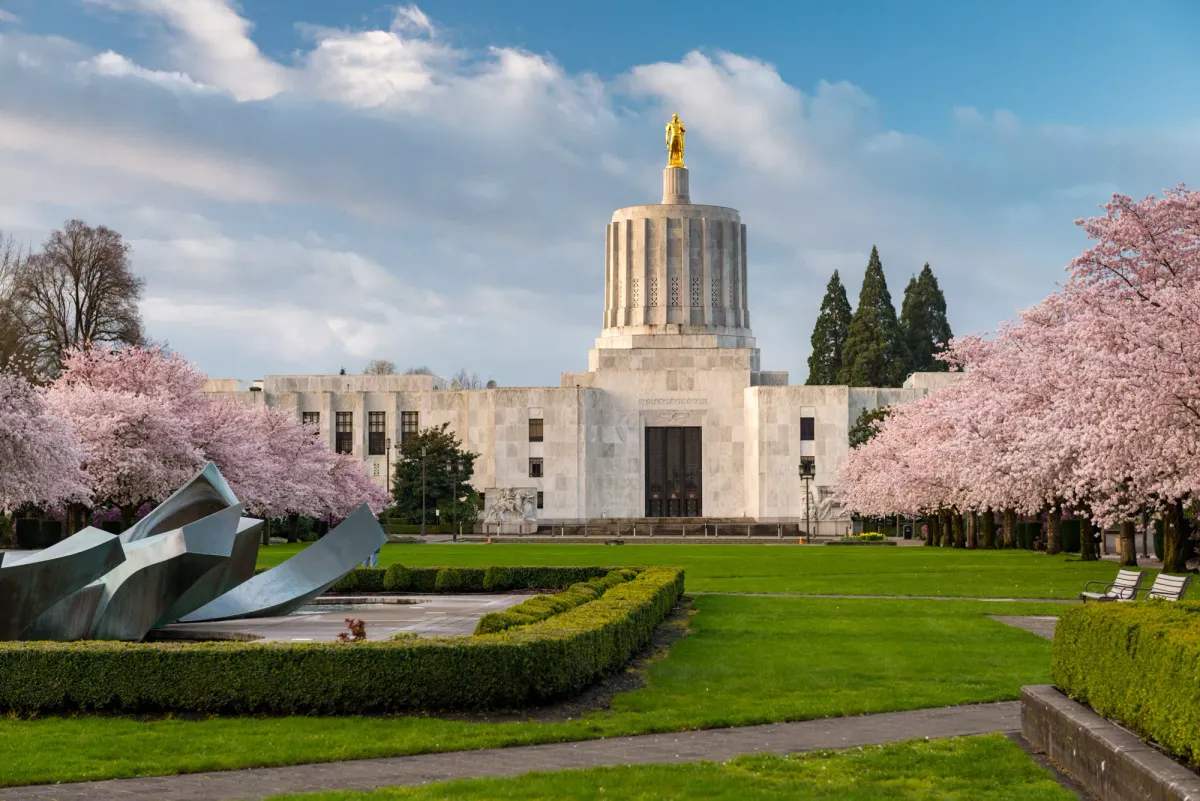Native American children significantly more likely to be arrested, detained in Washington
Before and after trial and even for low-level, nonviolent crimes, Native American youths are locked up at higher rates

For the past 30 years, it’s been clear: Native American children in Washington state are far more likely to be arrested and jailed than white kids.
The state’s courts and Washington Department of Youth and Families have acknowledged the justice system continues to hold back Native American youth, funding committees and producing action plans to address racial inequities in the juvenile legal system. Advocates have called for fewer arrests, many of which are discretionary. Lawmakers have demanded more data on juvenile arrests.
Yet the gaps have continually worsened. Data from the nonprofit Sentencing Project and the federal Office of Juvenile Justice and Delinquency Prevention from 2019-23, the most recent available, shows that Native American children in Washington are more than 4.5 times more likely to be incarcerated than their white peers on average, up from 2.7 times more in 2001.
“As long as we’ve looked at data for Washington state, Native youth are much, much more likely to be incarcerated than their white peers,” said Joshua Rovner, a senior research analyst and the former youth policy director for the Sentencing Project, which researches incarceration nationwide.
While all youth of color experience unequal treatment in Washington state’s legal system, the inequities among Native American youth are especially stark, exceeding national averages, particularly for nonviolent offenses.
Indigenous children are significantly more likely to be jailed than their white peers in Washington, especially on the lowest level offenses and nonviolent crimes, Rovner said. Even when youth exit the system, courts are more inclined to send them back if they slip up.
Though there aren’t disparities in arrests and referrals present in every county of the state, the gaps, where they do exist, are so great they have shaped the statewide numbers.
In rural counties like Whitman County, the problems are worse — Native American children there are nearly seven times more likely to be arrested than white children, the largest disparity in the state based on 2023 data.
In Okanogan County, near the Confederated Tribes of the Colville Reservation, Native American children made up 52% of all juvenile arrests in 2022 despite only 8% of the county’s population being Native American. Colville citizens and lawyers representing those kids say many in the community feel that they are unfairly targeted by state law enforcement — pointing to high rates of discretionary searches of Native American drivers and traffic cameras directed at main roads on and off tribal land.
Even before they’re convicted of a crime, Native American children are 6.4 times more likely to be kept in detention than white children. After being tried in court, they’re 6.1 times more likely to be kept in custody rather than being given opportunities to serve their sentence in the community.
Advocates and those who work alongside young people in the state say the disparities are partly the result of structural racism in the criminal legal system rather than an intrinsic difference in behavior.
“I do not know what the solution is,” said Suzanne Hayden, an attorney with the Clallam County Public Defenders office and the sole attorney in the county who works with youth. “I don't know how to make it different, unless I, you know, call the judge on his rulings afterwards and say, ‘Well, Your Honor, you were really racist.’”
Seattle lawyer Gabe Galanda, an Indigenous rights attorney, advocate and a citizen of the Round Valley Tribe, said Native Americans in Washington are also frequently unable to afford their own representation, and some Indigenous kids go through the system without the support of a parent or guardian.
“They’re going it alone,” Galanda said.
Overpoliced
As a teenager, Derrick Belgarde was himself stuck in the revolving door of youth incarceration.
“I spent so much time in (detention), I was in and out, in and out, in and out for probation violations,” said Belgarde.
It took years of fighting the unrelenting beast of alcohol addiction — and the support of a rehab program that understood his culture and needs — for Belgarde to make his way to sobriety.

Now, in both his family and community, he sees how young people who lacked proper help and support during their formative years continue to struggle as adults to break that cycle.
“It was like a machine,” Belgarde said. “And it creates more harm than good.”
For kids trying to get on the right path, jail can start to feel like a never-ending cycle, according to Belgarde, a citizen of the Confederated Tribes of Siletz Indians and executive director at the Chief Seattle Club, a Native American-led housing and support services organization.
Early court involvement is closely linked to broader social and health inequities, research shows. Children drawn into the justice system often face poverty, unstable housing and limited access to mental health support, creating a cycle of disadvantage that persists into adulthood.
Belgarde’s repeated arrests caused rifts between him and his mother, who at one point threatened to sue the court system for disruptions in the family.
“It was ruining the household,” Belgarde said.

Native American children are disproportionately more likely than white kids to get caught up in that system.
Though they’re 2.5 times more likely to be arrested for a violent crime, Indigenous children are seven times as likely to be charged for nonviolent property crimes, according to 2023 data from the federal Office of Juvenile Justice and Delinquency Prevention.
Inside a youth prison in Marion County, Oregon, harsh conditions intensified Belgarde’s feelings of isolation and despair.
“It was very traumatizing,” he said. “It was very horrendous, and I can see how other kids probably got very damaged from going in and out of that place.”
Advocates say Native American kids are also disproportionately arrested for charges where officers are not mandated by law to make an arrest, such as for obstruction of justice, which is when a person is accused of hindering or delaying a law enforcement officer in doing their duties.
“Obstruction [of justice] especially is, I feel, the most abused,” said Allie Steinberg, the diversion workshop coordinator with CHOOSE 180, an organization that provides diversion services to young adults in Pierce and King counties.
She added that overpolicing of communities of color leads to more discretionary arrests.
“Maybe nothing illegal actually happened, but the police officer was like, ‘I don't like the way that you’re talking to me’ or ‘I’ve had a bad day.’”
Washington’s Department of Children, Youth and Families, which oversees the state’s juvenile incarceration system, faces serious overcrowding and complaints of mistreatment at its juvenile rehabilitation facilities, particularly Green Hill School, the state’s only facility equipped to handle boys and young men between the ages of 16 and 25. In an effort to alleviate overcrowding, the child welfare agency has been regularly transferring some incarcerated young people to minimum-security adult prisons.
Higher standards
Indigenous children are not only more likely to enter the justice system than white kids, but data shows Indigenous children have less room for error, even after they’ve been released.
“There have been white kids who go in front of a judge for probation violations, and the kids are saying, ‘Just give me another chance, I can prove this to you,’ and those kinds of things,” Hayden said. “And to my amazement and surprise, the judge will say, ‘OK.’”

But Hayden said this summer she had a Native American client sent back to jail over a probation violation, despite the child writing a three-page letter explaining his situation and promising to improve, which the child’s probation officer refused to read.
“He wouldn’t even give this kid the respect of reading an incredibly well written, well thought out letter, and just went through a litany of everything this kid has ever done wrong in his life,” she said.
Hayden asked for a week for the kid to demonstrate improvement, but the judge refused. The child was sent back to jail for 30 days.
“As far as I was concerned, the court system had just told this kid, ‘We don’t believe what you have to say. We don’t care how well you say it. We don’t have any hope for you. So go sit in detention,’” Hayden said. “I’m appalled that that just happened. … I was so incensed in court that this guy wouldn’t even read the letter.”
According to 2023 data from the Office of Juvenile Justice and Delinquency Prevention, Indigenous juveniles in Washington are nearly 30 times more likely to be sent back to detention over an administrative probation violation, like missing a check-in with their probation officer, than white children.
Wanda Bertram, communications strategist for the Prison Policy Initiative, a nonprofit research group that advocates against incarceration, said the fact that Washington is jailing children over these violations is striking.
“These aren’t even crimes, right?” Bertram said. “These aren’t reasons for kids to be locked up.”
For Hayden, the court failed to look at the full picture of the child’s case before sending him back to jail, she said.
“I was very upset at the judge for not giving this kid just a one week bump,” Hayden said. “You know, let him show what he can do in one week — he did it for all the little blue-eyed blondes.”
Despite growing evidence that children, particularly those accused of nonviolent crimes, do better in the future when given alternatives to jail like therapy and anger management, Indigenous children are offered fewer opportunities to do so.
“There’s no outcome where formal court processing does better for these kids,” Rovner said.
Starting in schools
School can be another entry point into the criminal legal system, and Native American students in Washington are suspended and expelled at rates significantly higher than their white peers. Despite reforms aimed at promoting equity, statewide discipline data show a continuing trend of exclusionary practices.
In some districts, like Okanogan County, the connection between truancy and juvenile court is particularly stark. Truancy involves long-term, frequent and unexcused absences from school, and if classroom interventions to improve attendance don’t work, a child can be sent to court for it, at the behest of the school district.
Nearly 41% of truancy cases in the county involve Native American youth, primarily from the Confederated Tribes of the Colville Reservation, many of whom face barriers like a lack of transportation to school or mental health support.
Belgarde was assigned a truancy officer in high school, who checked in on his school attendance and saw he was home by a curfew.
It didn’t work, and he kept struggling with school, skipping classes and feeling isolated. These patterns contribute to higher dropout rates and place Native American youth on a trajectory for greater risk of incarceration later in life. According to Washington’s child welfare agency, dropping out of school triples the likelihood of future involvement in the criminal legal system.
Belgarde dropped out of school himself, started working and became a young father by 18.
“When they let me off, I left home, but I didn’t have nowhere to go,” he said.
Native American children make up 26% of the state’s truant children despite making up around 1% of the school population, and they have the highest rate of truancy cases sent to juvenile court in the state, at roughly 10%.
Many Indigenous families have a historical mistrust of school and state systems based on prior abuses of Indigenous children in residential boarding schools and forced separations of Indigenous families by the federal government. When families don’t appear in court for truancy allegations, children are at risk of being placed under state supervision or referred for formal court charges, deepening their contact with the legal system.
Natalie Welch, a citizen of the Eastern Band of Cherokee Indians and the executive director of Rise Above, a Seattle-based nonprofit dedicated to empowering Native American youth, said that providing Native American children with increased support and community connections helps keep them out of the legal system.
“It’s a smart investment to put this money into helping kids upfront instead of trying to solve the problems on the backend,” Welch said.
Rise Above has partnered with school districts with high rates of truancy among Native American students to provide incentives for kids to show up to class. Her organization works with local businesses, schools and organizations to offer free sports clinics, mentorship and community involvement opportunities. Improving accessibility to such programs, particularly for middle school-aged students who are at a critical stage in their development, is important for avoiding bad behavior, she said.
“We’re trying to be there so they build that trust before anything bad happens,” Welch added.
Left out of reforms
Advocates for Native Americans say Washington lawmakers should revisit a number of reforms, like considering tribal notifications for Indigenous youth involved in a juvenile court case or addressing specific statutes that youth of color are disproportionately charged with.
Still, data gaps exist that limit the understanding of the true scope of disparities involving Native American youth.
Tribal affiliation isn’t regularly recorded when youth are arrested, and courts aren’t required to alert tribes when their youth enter state court systems. That limits any potential cross-jurisdictional collaboration that could connect Native American youth to tribal resources for mental health, substance use or behavioral issues.
Hayden, the public defender, said that in her experience, tribes can step up to provide resources, like housing support or counseling, for kids in a tough spot.
Race data reported to the state and federal government to track youth in the system is typically collected through self-identification or through law enforcement officials’ estimates, which may undercount Native American youth or lump them into a “multiracial” category.
Washington has enacted broad juvenile justice reforms in recent years like allowing juvenile courts to retain jurisdiction until a person is aged 25 for crimes committed before they turned 18, expanding mandatory diversion for children accused of first-time, low-level offenses and ending the automatic use of juvenile “points” during sentencing, which can increase a child’s time in jail and impact sentencing decisions if they’re later charged as an adult.

But measures to explicitly address the disparities Native American children face in the justice system have been few — and recent efforts to address the inequities stemming from past use of juvenile points have died in the Washington Legislature, despite significant endorsement from advocates and groups representing tribes.
In the 2025 session, House Bill 1274 would have allowed for the resentencing of adults whose sentences were influenced by juvenile points, meaning crimes they committed as youths lengthened their sentence as an adult for a different crime. Tribal officials and advocates say Native American people in Washington are disproportionately impacted by the sentencing practice, which effectively punishes people a second time.
The Affiliated Tribes of Northwest Indians, an organization representing the interests of 54 tribal governments in the Northwest, and the American Civil Liberties Union have repeatedly called on the Legislature to change this process, pointing to how Native Americans are disproportionally impacted.
“Overly long state prison sentences resulting from incorrect choices made by Indigenous persons when they were juveniles diminish their hope for forgiveness, redemption, rehabilitation, return to their families, and reentry into their communities,” according to a 2023 resolution by the group.
Although HB 1324 eliminated the automatic application of juvenile points in 2023, the bill wasn’t retroactive — leaving around 420 Native American people in the state’s prisons whose sentences were lengthened because of points as of 2023, and later bills to make the law retroactive have failed. That’s unlikely to change anytime soon. Advocates like Galanda say there’s little appetite in Olympia to pass legislation in the coming session that would allow their resentencing due to budget constraints.
Some Washington lawyers who work with Native American clients say the state is missing a critical opportunity to notify tribal governments that their minor citizen is involved in a state court case, which could allow the tribe to intervene with meaningful assistance, like legal, financial or spiritual support. A similar mechanism exists under the Indian Child Welfare Act, but for child custody cases.
“There’s really no good news story here because youth of color are treated more harshly than their white peers whenever the system touches them,” Rovner said.
The story you just read is only possible because readers like you support our mission to uncover truths that matter. If you value this reporting, help us continue producing high-impact investigations that drive real-world change. Your donation today ensures we can keep asking tough questions and bringing critical issues to light. Join us — because fearless, independent journalism depends on you!
— Jacob H. Fries, executive director
DonateCancel anytime.














